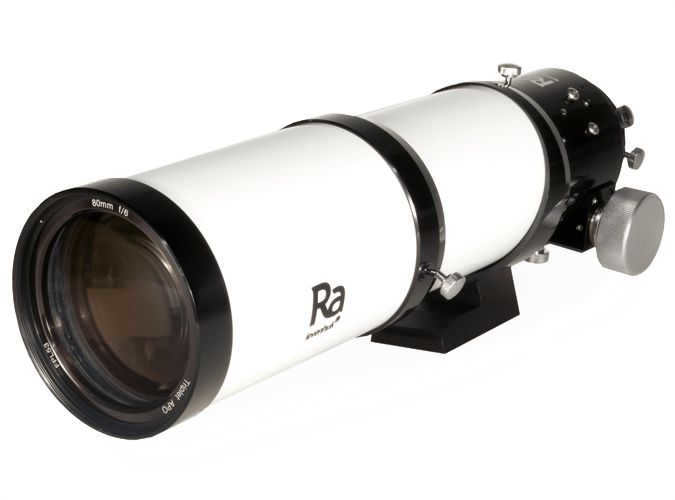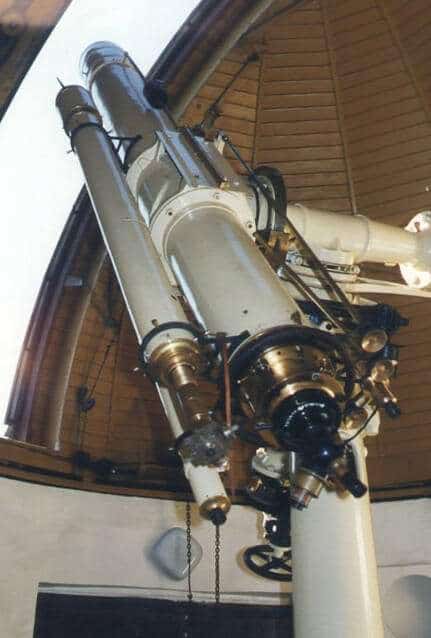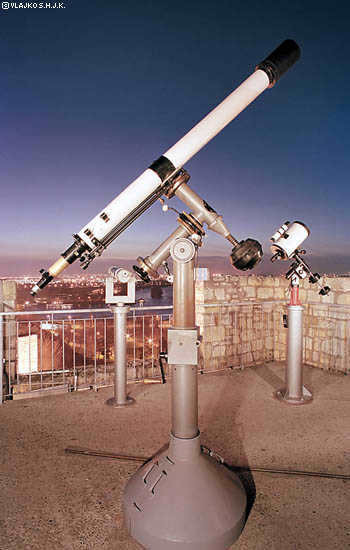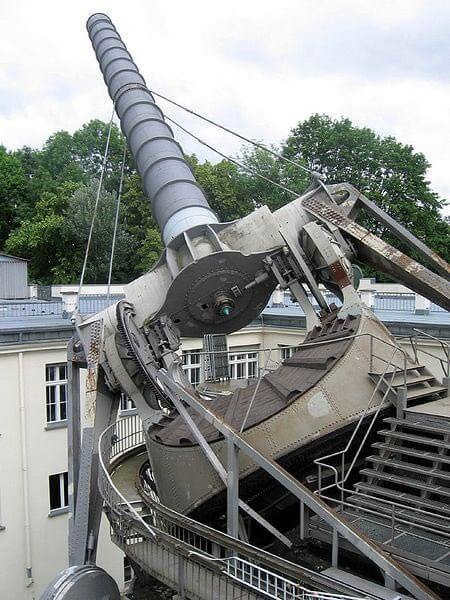
- Observatory: Archenhold Observatory
- Location: Berlin, Germany
- Lens diameter: 27 inches (70 centimeters)
- Focal length: 21 meters
- Year of construction: 1896
This refractor telescope, located at the Archenhold Observatory in Berlin, Germany, boasts a focal length of 21 meters, making it the longest refractor telescope in the world. Interestingly, the weight of its moving parts is a staggering 130 tons!
9 Howard Grubb Refractor Telescope.
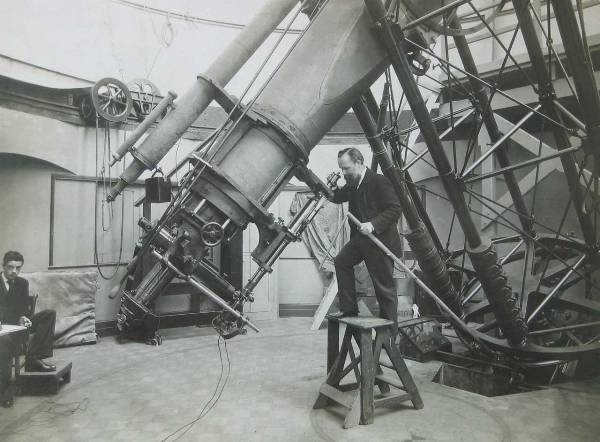
- Observatory: Greenwich Royal Observatory
- Location:United Kingdom, Greenwich
- Lens diameter: 28 inches (71 cm)
- Focal length: 8.5 m
- Year of construction: 1893
The Museum of Astronomical and Navigational Instruments, located at the Greenwich Observatory in the United Kingdom, is home to a variety of fascinating exhibits. Among these exhibits is the impressive 9 Howard Grubb Refractor Telescope. This telescope, constructed in 1893 by Howard Grubb, boasts a lens diameter of 28 inches (71 cm), making it the largest refractor in Britain. Today, visitors to the museum can marvel at this unique piece of astronomical history.
8 The Repsold Refractor Telescope
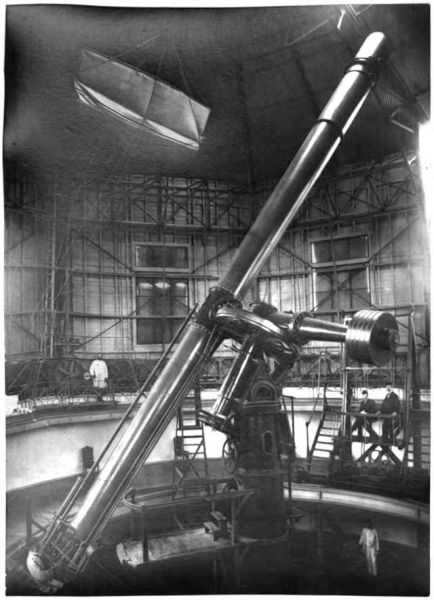
- Observatory: Pulkovo Observatory
- Location:Russia, St. Petersburg
- Aperture: 30 inches (76 cm)
- Focal length: 12.8 meters
- Year of construction: 1885
- Year of dismantling: 1941
The observatory’s scientific pursuits encompass a wide range of essential fields in modern astronomy, including celestial mechanics, stellar dynamics, astrometry, solar studies, stellar physics, and observational techniques. Construction of the observatory commenced in 1835 and was finalized in 1839. To commemorate its 50th anniversary, the observatory established an astrophysical laboratory and acquired the Repsold 76-centimeter telescope, which was the largest refractor telescope in the world at that time and was manufactured by the Alvin Clark company.
7 Thaw Memorial Refractor Telescope.

- Observatory: Allegheny Observatory
- Location:United States, Pennsylvania, Pittsburgh
- Aperture: 30 inches (76 cm)
- Focal length: 14.1 m
- Year of establishment: 1917
6 Nice Observatory Telescope.
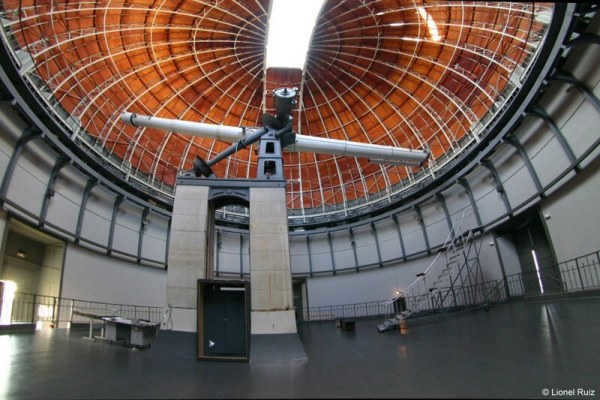
- Observatory: Nice Observatory
- Location:France, Nice
- Lens diameter: 30 inches (76 cm)
- Focal length: 17.9 m
- Year of construction: 1888
The refractor telescope, measuring 76 cm (30 inches) in lens diameter and 18 meters in length, was the largest and most powerful telescope worldwide when it was initially set up at the Nice Observatory in 1888. However, its record was soon surpassed by a telescope installed at the Lycian Observatory just a year later. The Nice Observatory Telescope played a crucial role in the discovery of approximately two thousand new double stars.
5 The Amazing Refractor.
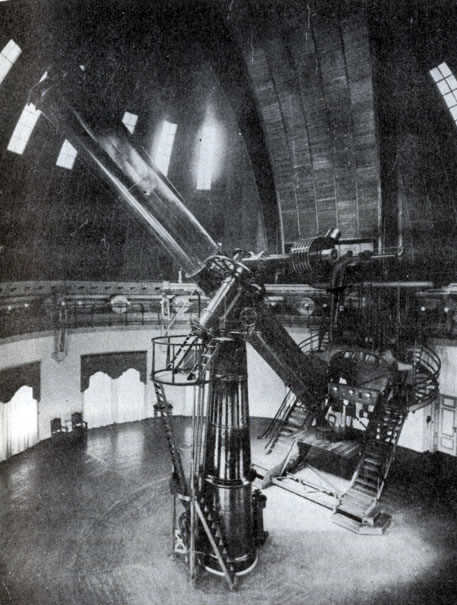
- Observatory: Potsdam Astrophysical Institute
- Location:Germany, Potsdam
- Lens diameter: 32 inches (81 centimeters)
- Focal length: 12 meters
- Year of construction: 1899
"The Great Refractor" is situated in a spherical structure (with a dome diameter of 21 meters) specially built for the Potsdam Astrophysical Observatory. In 2006, the structure was renovated and made accessible to the general public. The dual refractor telescope is still operational and is utilized for scientific investigations.
4 Grand Lunette.
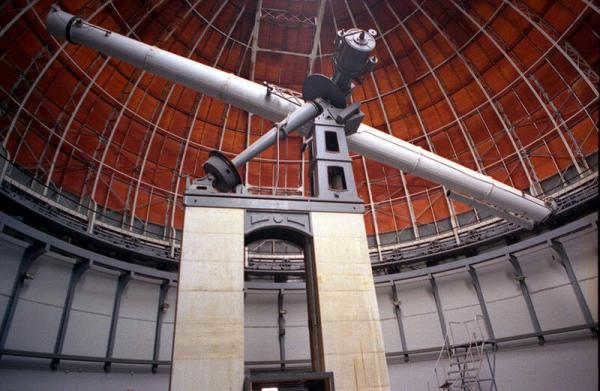
- Observatory: Paris Observatory
- Location:France, Medon
- Lens diameter: 33 inches (83 centimeters)
- Focal length: 16.2 meters
- Year of construction: 1893
The Paris Observatory, established in 1667 by a decree from King Louis XIV of France and Navarre, is the oldest operational observatory in the world. It was officially inaugurated by the king on May 1, 1682. The largest instrument at the observatory is the double photovisual refractor, which consists of a visual refractor with a lens diameter of 83 cm and an astrograph with a lens diameter of 63 cm. Both instruments have a focal length of 17 meters.
3 The Telescope at Lycus Observatory
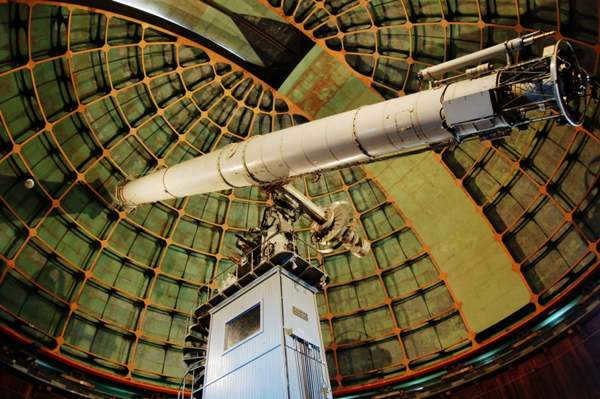
- Observatory: Lick Observatory
- Location: USA, California, Mount Hamilton
- Lens Diameter: 36 inches (91 cm)
- Focal Length: 17.6 m
- Year Built: 1888
The Lick Astronomical Observatory, situated on the slopes of Mount Hamilton in California, USA, is known as one of the first mountain observatories. It sits at an elevation of 1,283 meters and is located 46 kilometers away from the city of San Jose. Owned by the University of California at Santa Cruz, the observatory’s main attraction is its 36-inch (91.44 cm) refractor telescope, which held the title of the world’s largest telescope for a period of 9 years.
2 Clark Refractor.

- Observatory: Yerkes Observatory
- Location:United States, Wisconsin, Williams Bay
- Lens diameter: 40 inches (102 cm)
- Focal length: 19.4 m
- Year of construction: 1897
The Yerkes Observatory is home to an impressive 40-inch (1.02-meter) refractor telescope manufactured by the Alvin Clark Company. This particular telescope holds the distinction of being the largest refractor telescope ever utilized. Interestingly, the skilled craftsmen at Clark’s establishment painstakingly performed the fine grinding process by hand, meticulously adjusting each component of the lens to achieve the desired shape. This laborious task, which demanded immense patience and expertise, spanned a period of five years. Nevertheless, the outcome was a remarkable achievement. It is plausible to suggest that a practical limit has already been reached. Lenses with a greater than 40-inch cross-section would likely become excessively thick, resulting in a significant absorption of light. Moreover, due to their immense weight, these lenses tend to sag, ultimately compromising the quality of the images they produce.
There is little purpose in surpassing Alvan Clarke’s achievements for various reasons. Refractors with long focal lengths, such as the Yerkes or Lick refractors, suffer from a significant secondary spectrum that causes photographs taken with them to appear blurry. These instruments are also not ideal for conducting spectral and astrometric observations, as smaller instruments tend to yield better results. It seems that refractors have reached their maximum potential, and their future prospects are limited.
1 The Telescope from the 1900 World’s Fair in Paris
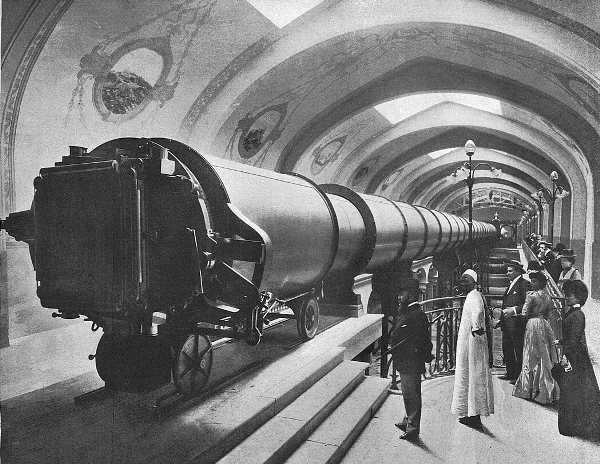
- Exhibition: World’s Fair (1900)
- Location:France, Paris
- Lens size: 59 inches (125 cm)
- Focal length: 57 m
- Year of construction: 1900
- Year of disassembly: 1909
This refractor telescope holds the record for being the largest ever built. Its purpose was mainly for exhibition at the 1900 Paris World’s Fair, rather than for actual astronomical observations. After the fair, the telescope was taken apart and dismantled.
The achromat lens with a diameter of 1.25 m and a focal length of 57 meters was designed for visual observations, but it could be replaced with another lens specifically corrected for photographic observations if used as an astrograph. However, due to its considerable weight and the length of the tube, it was not feasible to mount the telescope on a traditional equatorial mount. As a result, it was decided to mount the telescope in a fixed and horizontal position. To aim at celestial objects, a separate siderostat with a diameter of two meters was used. This siderostat had a flat rotating mirror that reflected light into the fixed lens. Focusing was achieved by moving the eyepiece part along the guide rails. At a magnification of 500x, the instrument had an angular field of view of 3 angular minutes.
- Lenticular telescopes, also known as refractors, are the traditional and most widely used type of telescope among our customers. They are popular due to their ease of use and convenient size. These telescopes are suitable for observing celestial bodies such as the Moon, planets, and double stars.
- Mirror telescopes, also known as reflectors, have a concave mirror and do not suffer from chromatic aberration. They are designed to be smaller and lighter than refractors, starting from 150 mm in size, while still providing a clear image. Reflectors follow the principle of maximizing aperture while minimizing cost.
- Mirror-lens (catadioptric) telescopes are equipped with a spherical main mirror and aberration-compensating lenses (meniscus or correction plate). These telescopes combine the advantages of refractors and reflectors, providing a more detailed picture compared to optical instruments with the same aperture. However, they do have some drawbacks, including a high price, lower light transmission ability compared to refractors, and slightly lower image contrast.
Now, let’s discuss the different designs and additional features of telescopes. If you also need to observe terrestrial objects (not all telescopes provide a direct image), then you should consider choosing a telescope with an azimuth mount.
Discovering the wonders of the universe through a telescope with a specific lens diameter (aperture)
There exist specialized lists that provide details on the celestial entities that can be observed using optical instruments with specific aperture characteristics. Additionally, telescope manufacturers include information in their product descriptions regarding the objects that can be seen through the telescope, such as Messier’s list (which includes 110 galaxies, globular star clusters, scattered star clusters, and nebulae) or the New General Catalog (NGC) with subsequent additions containing the IC I and IC II indices (totaling approximately 13 thousand objects). It is important to note that celestial bodies are classified based on their brightness, which is expressed in stellar magnitudes (m) as seen from Earth. The smaller the stellar magnitude, the brighter the object and the more easily observable it is through a telescope. However, individuals with good eyesight may be able to see objects ranging from -1 to 6.5 stellar magnitude with the naked eye. It is worth mentioning that the Sun has a stellar magnitude of -26.74. The following are some notable celestial objects that can be observed using telescopes with specific apertures.
Telescopes for kids featuring affordable lenses up to 50mm or slightly bigger
Children’s telescopes are capable of displaying various celestial objects that are closest to our planet. These include the craters of the Moon, satellites of Jupiter, the phases of Venus, and sunspots. However, it is important to note that observing the Sun without special filters is strictly forbidden, as it can instantly worsen or even cause a loss of sight. Additionally, children should always be under parental supervision while using telescopes.
Another interesting object to observe through a children’s telescope is the Orion Nebula. Although the picture may not be the clearest, observers will still be able to see the outlines of real planets and other celestial objects.
To ignite interest in space exploration, it is recommended to start with observing the Moon. Through a children’s telescope, one can observe furrows, crevices, and mountains on its surface. The relief objects of the Moon will be particularly well visible at the border of dark and light areas. Additionally, during a full moon, it is better to observe the light ray structures of craters.
Most telescopes suitable for novice astronomers fall within this range. Along with Neptune and Uranus, you will be able to observe the polar caps of Mars, the Andromeda Galaxy, and the rings of Saturn:
– all the significant objects in our solar system, including sunspots with the use of a special filter;
– magnificent craters on the Moon, the Earth’s only natural satellite, with a diameter of 8-10 kilometers;
– bands of majestic clouds on Jupiter, which is the largest planet in our solar system;
– stars with a maximum stellar magnitude of 11.5 (stars brighter than magnitude 11 are usually marked on celestial maps);
– double stars (gravitationally bound, with a common center of mass) with a separation between them greater than 2″ (arc seconds);
– large globular star clusters (tightly bound by gravity, with stars orbiting around a single center);
– vast nebulae made up of plasma, gas, and dust.
A telescope with an aperture of 80-90 mm for refractors, 100-120 mm for reflectors, or catadioptrics with magnification power ranging from 15 to 250x can provide the following observations:
When using a telescope with similar specifications, an observer can witness:
- The different phases of Mercury
- The seas on Mars
- Neptune and Uranus in the form of disks
- The sunspot structure (please note that looking at the Sun without proper solar filters can result in permanent eye damage)
- The massive polar caps on Mars
- Visible Cassini slits or divisions with a width of around 5 thousand km in the A and B rings of Saturn, along with the ability to see 5 of its satellites
- Grooves and craters larger than 5 kilometers in diameter on the lunar surface
- Stars with a magnitude up to 12th
- Double stars with a separation of more than 1.5″
- There are several diffuse nebulae that emit light.
- There are numerous globular clusters.
When using a telescope with a diameter of 90-100 mm, you can clearly see the Andromeda Nebula even with regular binoculars.
A telescope with a diameter of 100-130 mm refractor, 130-150 mm reflector, or catadioptric with a magnification of 30 to 300x is recommended.
With this diameter and magnification, you can observe the following details of celestial objects:
- Lunar furrows, which are narrow extended depressions, cirques, which are lunar flat craters without a central slide, and traditional craters that are three kilometers or more in diameter.
- Asteroids and comets visually resemble nebulous spots with light-colored tails.
- More detailed features of clouds on Saturn and Jupiter.
- Continents on the surface of Mars.
- Stars with a maximum magnitude of 13 (m).
- binary stars (also known as binary systems) with separations exceeding 1″;
- elaborate formations of stellar clusters and nebulae;
- countless galaxies, nebulae, and star clusters;
- curvy patterns found within sections of massive and luminous galaxies;
- nearly every item listed in the Messier catalog.
When looking at Jupiter through a telescope with the lens sizes mentioned above, it may appear slightly flattened (although this flattening can be more noticeable in a 50 mm telescope). The planet’s shape is a result of its rapid rotation around its axis. Additionally, observers will be able to see the Great Red Spot, which is a large vortex in Jupiter’s atmosphere. It is particularly fascinating to observe Jupiter’s satellites as they pass across the planet’s disk and move in and out of its shadow. With an aperture of 100-150 mm, bright nebulae start to take on shape and show some structure. For instance, the Turtle Nebula (NGC 6210) appears as a small bluish disk.
150-180 mm refractor, reflector or catadioptric with 175-200 mm magnification from 50 to 400x
For passionate astronomy enthusiasts, this aperture size is an ideal starting point. Such telescopes allow for a deeper exploration of space, enabling observers to not only observe relatively small objects on the surface of the Moon from a distance of 1.5 kilometers, but also to discover:
- Large-scale atmospheric phenomena on Mars, such as massive dust storms and giant clouds;
- The four bright satellites of Jupiter and the six to seven satellites of Saturn;
- Stars with a minimum brightness of up to the 14th magnitude;
- Double stars with a distance of more than 0.6″ between them;
- The intricate structures of galaxies, such as the spiral galaxy Bode M81 in the Big Dipper or the Whirlpool M51 in the constellation Canes Venatici, globular clusters, and nebulae;
Make sure to observe globular star clusters. When using this size of aperture, they will no longer appear as just round spots, but will resemble a swarm of bees. The closer they are to the center of the cluster, the denser they will appear to each other.
Telescopes with an aperture size of 200 mm refractor, reflector and catadioptric 250 mm and larger
This size of aperture is perfect for observing galaxies, nebulae, and other deep space objects, which are collectively referred to as Deep Sky in the Western world. It is easier to observe these objects when the sky is sufficiently dark. Here are some of the things you can expect to see with such telescopes:
- Mars’ satellites Deimos and Phobos, along with numerous details of the planet’s surface;
- The disks of Uranus and Titan;
- Detailed lunar objects smaller than one and a half kilometers in diameter;
- Saturn’s rings, including a gap in the A ring known as the Enke division;
- Triton, one of Neptune’s moons, is the largest in size.
- Under clear weather conditions and away from city lights, you can observe the dwarf planet Pluto.
- You can see all stars with a stellar magnitude of up to 15.
- Double stars that are more than 0.5″ apart are also visible.
- You can explore the structures of numerous globular clusters, nebulae, and galaxies.
- Additionally, you can observe many objects listed in the NGC catalog.
It should be noted in advance that the view of nebulae through a telescope may not match what you see in glossy magazines. Scientific telescopes capture light over a long period of time and the images are then processed using specialized software. The human eye, on the other hand, will perceive a slightly different image. However, as the telescope’s diameter (aperture) increases, the image becomes more vibrant and clear. For instance, in a 200 mm telescope, the globular cluster M13 in the constellation of Hercules can be fully distinguished with some individual stars visible. Additionally, the Great Orion Nebula may exhibit hints of color rather than just appearing gray in certain areas. While galaxies may appear as tiny specks in a 60-70 mm telescope, a 200 mm telescope will reveal their structure, including dust clouds and spiral arms.
How can you maximize the number of objects you can see through a telescope based on its description? To achieve this, you need to find a prime observing location that is far away from city lights. The images of the night sky taken from a balcony and from a clear field will differ significantly. Additionally, the experience of fine-tuning the telescope and other skills developed through years of practice will play a crucial role. The selection of magnification, consideration of atmospheric conditions, and choosing the right time for observation are all essential knowledge that can be found in the reference materials provided with the telescope, including electronic resources. Our online store consultants are always available to assist you in selecting the best telescope based on your skills and goals for astronomical research.


Fig. An amateur telescope in the field. Getting ready for observations
Therefore, it is essential to have a general understanding of the various things that can be observed through a telescope with different types and lens sizes. With this information in mind, you can select a telescope based on your personal preferences and requirements. Keep in mind that the more complex the telescope’s design and the higher its magnification, the higher the price. Nevertheless, regardless of the type and quality of the telescope, observing the sky will always provide the genuine pleasure of delving into the mysteries of the Universe.
Telescope (from the Greek words τῆλε – far away + σκοπέω – I look) is a device created for observing celestial objects [1].
There are telescopes available for all ranges of the electromagnetic spectrum:
Furthermore, devices used to detect neutrinos are commonly referred to as neutrino telescopes. Similarly, detectors used to measure gravitational waves can also be called telescopes.
Optical telescope systems are utilized in the field of astronomy to observe celestial objects [1]. Additionally, they are used in optics for various auxiliary purposes, such as altering the divergence of laser radiation [2]. Moreover, a telescope can be utilized as a spyglass, enabling the observation of distant objects [3]. The earliest sketches of a basic lens-based telescope were discovered in Leonardo Da Vinci’s records. Hans Lippershey constructed the first telescope in 1608. The invention of the telescope is also credited to his contemporary, Zacharias Jansen.
The Past
The invention of the telescope is traditionally attributed to John Lippersguy, a Dutch eyeglass maker, who demonstrated his creation in The Hague in 1608. However, he was not granted a patent because other craftsmen, including Zachary Jansen and Jacob Metius, already had examples of telescopes. In fact, research suggests that telescopes were known even earlier, possibly as early as 1605. In 1604, Kepler published the Supplements to Vitellius, where he discussed the path of light rays in an optical system with convex and concave lenses. Interestingly, the earliest known drawings of a simple telescope, both single-lens and double-lens, were actually found in Leonardo Da Vinci’s records from 1509. In these records, Da Vinci wrote, “Make glasses to look at the full moon” in his “Atlantic Codex”.
Galileo was the first person to direct the telescope towards the sky, transforming it into a powerful tool for gathering scientific information. In 1609, he constructed his initial telescope, which had a magnification of three times. In that same year, he built another telescope that had a magnification of eight times and was approximately half a meter in length. Later on, Galileo created a telescope that provided a magnification of 32 times. This particular telescope was about one meter long and had a lens diameter of 4.5 cm. Despite its numerous imperfections and aberrations, this instrument allowed Galileo to make several significant discoveries.
The term “telescope” was proposed in 1611 by the Greek mathematician Giovanni Demiziani to describe one of Galileo’s instruments, which was exhibited at a banquet held at the Accademia dei Lincei. Galileo himself used the term “perspicillum” [5] in Latin to refer to his telescopes.
A telescope is a device used for observing objects, consisting of a tube that is mounted on a mount and equipped with axes for pointing and tracking. It can be made of solid material, or have a frame or truss structure. The front part of the telescope contains a lens, known as the objective lens, and the rear part has an eyepiece. The objective lens focuses the light from the observed object onto the eyepiece. In some cases, instead of the eyepiece, a photographic film or a radiation receiver can be placed in the focal plane of the objective lens. In such cases, the telescope lens functions as a photographic lens. To adjust the focus, a focuser, or a focusing device, is used.
Telescopes can be classified based on their optical scheme into two main types:
- Refractors, also known as dioptric telescopes, use a lens or a system of lenses as the objective.
- Reflectors, also known as catoptric telescopes, use a concave mirror as the objective.
- Mirror-lens telescopes (catadioptric) utilize a spherical mirror as the objective lens, with a compensating lens, lens system, or meniscus to correct for aberrations.
Furthermore, professional astronomers employ special solar telescopes for observing the Sun, which have a different structure compared to traditional star telescopes.
In amateur astronomy, an unfocused image obtained by extending the eyepiece is used alongside the focused image, allowing for the assessment of the brilliance of nebulous objects like comets in comparison to stars. Similarly, an “inverted” telescope is used to estimate the brilliance of the Moon during a full moon or lunar eclipse, observing the Moon through the lens.
Unique Characteristics of Optical Telescopes
An optical telescope is an afocal system that consists of a lens and an eyepiece, with zero optical power [6]. Its main function is to enhance the apparent angular size and brightness of observed objects [3]. The telescope’s lens diameter (aperture) and focal length are the key parameters that determine its other features. It allows for the observation of artificial satellites, celestial bodies, and distant objects on Earth. Additionally, a telescope can magnify and provide detailed images of terrestrial objects. Any type of telescope can be used for this purpose, although in certain cases, a telescope with a lower aperture may produce a clearer image compared to a fast telescope with a larger lens, which can be affected by more atmospheric distortion and result in a blurred image.
You can use a telescope to observe objects in the solar system as well. Similar to the previous point, any telescope can be used for this purpose.
The accessibility of deep space objects, such as a wide variety of nebulae and galaxies, increases with the aperture size of the telescope. Inexpensive amateur telescopes typically have limited capability to observe galaxies, etc. For instance, a telescope with a 130 mm aperture can be used to observe the “Andromeda” galaxy.
 represents the angular resolution measured in angular seconds, and represents the diameter of the objective lens measured in millimeters.
represents the angular resolution measured in angular seconds, and represents the diameter of the objective lens measured in millimeters.
,
where  and
and  represent the focal lengths of the objective and eyepiece.
represent the focal lengths of the objective and eyepiece.
If an envelope system or Barlow lens is utilized, this magnification must be multiplied by their multiplicity.
- The size of the visible sky field of view of the telescope, denoted as
 , has been determined through experimentation. It has been observed that the diameter of the telescope’s field of view, measured in arc minutes, is dependent on the applied magnification.
, has been determined through experimentation. It has been observed that the diameter of the telescope’s field of view, measured in arc minutes, is dependent on the applied magnification.


- The relative aperture of the telescope
 is defined as the ratio between the diameter of its objective lens and its focal length
is defined as the ratio between the diameter of its objective lens and its focal length  , where and
, where and  are measured in millimeters.
are measured in millimeters. - The telescope’s aperture is calculated as ,
.
The relative aperture of a telescope  and its luminosity are important characteristics of the lens. These two characteristics are inversely related to each other. A larger aperture results in a smaller relative aperture, which in turn leads to a brighter image formation in the focal plane. However, this also means that the magnification of the lens will be lower.
and its luminosity are important characteristics of the lens. These two characteristics are inversely related to each other. A larger aperture results in a smaller relative aperture, which in turn leads to a brighter image formation in the focal plane. However, this also means that the magnification of the lens will be lower.
- The transmittance (optical power)
 refers to the stellar magnitude of the faintest stars that can be seen through a telescope when it is viewed at zenith. This value can be estimated using Bowen’s formula for visual telescopes:
refers to the stellar magnitude of the faintest stars that can be seen through a telescope when it is viewed at zenith. This value can be estimated using Bowen’s formula for visual telescopes:
 . [9]
. [9]
There is also an alternative and simplified equation that can be found in various sources:


.
Reflector telescopes have a higher penetrating power at 1-2 m compared to refractor telescopes. The quality of optics, sky brightness, atmospheric transparency, and calmness affect the penetrating power of a telescope. The level and type of optical distortion (aberrations) are determined by the telescope design and the physical properties of its optical components, such as lenses, mirrors, prisms, and glass correctors.
 is the diameter of the Sun’s disk at the focus in millimeters, and
is the diameter of the Sun’s disk at the focus in millimeters, and  is the focal length of the lens in millimeters.
is the focal length of the lens in millimeters.
In this equation,  represents the scale in angular minutes per millimeter ('/mm), while
represents the scale in angular minutes per millimeter ('/mm), while  is the focal length of the lens measured in millimeters. By knowing the linear dimensions of the CCD sensor, its resolution, and the size of its pixels, we can calculate the resolution of the digital image in arc minutes per pixel.
is the focal length of the lens measured in millimeters. By knowing the linear dimensions of the CCD sensor, its resolution, and the size of its pixels, we can calculate the resolution of the digital image in arc minutes per pixel.
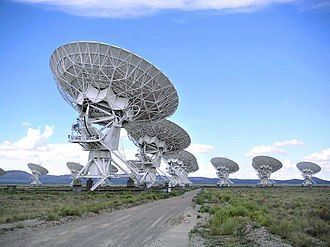
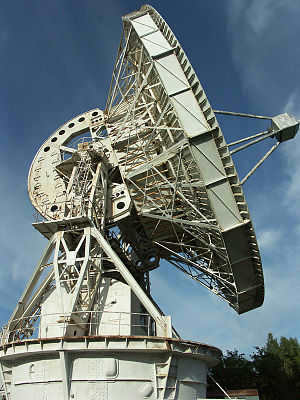
Telescopes in Space
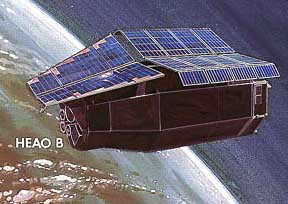
The Einstein Observatory, formerly known as HEAO B (High Energy Astrophysical Observatory B), was an X-ray telescope.
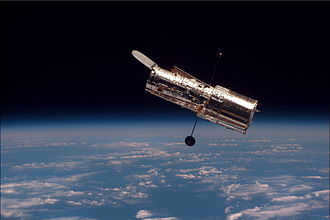

The Earth’s atmosphere is effective at transmitting radiation in the optical (0.3-0.6 µm), near-infrared (0.6 – 2 µm), and radio wavelengths (1 mm – 30 m). However, as the wavelength decreases into the near ultraviolet range, the atmosphere becomes less transparent, making observations in the ultraviolet, X-ray, and gamma-ray regions only possible from space. One exception is the detection of ultrahigh-energy gamma radiation, which can be observed using cosmic ray astrophysics techniques. In this method, high-energy gamma-ray photons in the atmosphere produce secondary electrons that can be detected using ground-based installations through Cherenkov luminescence. The C.A.C.C.T.U.S. telescope exemplifies this type of system.
Important optical telescopes
Refractive telescopes
| Yerkes Observatory | Williams Bay, Wisconsin | 40/102 | 1897 | Clark Refractor |
| Lick Observatory | Mt. Hamilton, California | 36/91 | 1888 | |
| Paris Observatory | Medon, France | 33/83 | 1893 | Double, visual lens 83 cm, photographic lens 62 cm. |
| Astrophysical Observatory | Potsdam, Germany | 32/81 | 1899 | Double, visual 50 cm, photographic 80 cm. |
| Nice Observatory | France | 30/76 | 1880 | |
| Pulkovo Observatory | St. Petersburg | 30/76 | 1885 | |
| Allegheny Observatory | Pittsburgh, Pennsylvania | 30/76 | 1917 | Thaw refractor |
| Greenwich Observatory | Greenwich, Great Britain | 28/71 | 1893 | |
| Greenwich Observatory | Greenwich, UK | 28/71 | 1897 | Double, visual 71 cm, photographic 66 |
| Archenhold Observatory | Berlin, Germany | 27/70 | 1896 | Longest modern refractor |
Telescopes for observing the sun
| Kitt Peak | Tucson, Arizona | 1.60 | 1962 |
| Sacramento Peak | Sunspot, New Mexico | 1.50 | 1969 |
| Crimean Astrophysical Observatory | Crimea, Ukraine | 1.00 | 1975 |
| Swedish Solar Telescope | Palma, Canary Islands | 1.00 | 2002 |
| Kitt Peak, 2 pieces in a common enclosure with 1.6 meters | Tucson, Arizona | 0.9 | 1962 |
| Teide | Tenerife, Canary Islands | 0.9 | 2001 |
| Kitt Peak | Tucson, Arizona | 0.7 | 1973 |
| Institute of Solar Physics, Germany | Tenerife, Canaries | 0.7 | 1988 |
| Mitaka | Tokyo, Japan | 0.66 | 1920 |
| Sayan Solar Observatory, Russia | Mondy, Buryatia | 0.8 | 1975 |
Schmidt Chambers
| Karl Schwarzschild Observatory | Tautenburg, Germany | 1.3-2.0 | 1960 |
| Palomar Observatory | Palomar Mountain, California | 1.2-1.8 | 1948 |
| Anglo-Australian Observatory | Siding Spring, Australia | 1.2-1.8 | 1973 |
| Tokyo Astronomical Observatory | Tokyo, Japan | 1.1-1.5 | 1975 |
| European Southern Observatory | La Silla, Chile | 1.1-1.5 | 1971 |
Reflecting telescopes
| Giant South African Telescope, SALT | Sutherland, South Africa | 11 | 2005 |
| Gran Telescopio Canarias | La Palma, Canary Islands | 10.4 | 2002 |
| Keck Telescopes | Mauna Kea, Hawaii | 9.82 x 2 | 1993, 1996 |
| Hobby-Eberly Telescope, HET | Jeff Davis, Texas | 9.2 | 1997 |
| Large Binocular Telescope, LBT | Mt. Graham (Eng.), Arizona | 8.4 x 2 | 2004 |
| Very Large Telescope, ESO VLT | Cerro Paranal, Chile | 8.2 x 4 | 1998, 2001 |
| Subaru Telescope | Mauna Kea, Hawaii | 8.2 | 1999 |
| Gemini North Telescope, GNT | Mauna Kea, Hawaii | 8.1 | 2000 |
| Gemini South Telescope, GST | Cerro Pachón, Chile | 8.1 | 2001 |
| Multimirror telescope (English.), MMT | Mt. Hopkins (English.), Arizona | 6.5 | 2000 |
| Magellan Telescope | Las Campanas, Chile | 6.5 x 2 | 2002 |
| Large Azimuthal Telescope, BTA | Pastukhov Mountain, Russia | 6.0 | 1975 |
| Large Zenith Telescope, LZT | Maple Ridge, Canada | 6.0 | 2001 |
| G.E.Hale 200-inch Telescope, MMT | Palomar Mountain, California | 5.08 | 1948 |
Notes
- ↑ 12BSE. Article “Telescope (astronom.)”
- ↑Pakhomov I. I., Rozhkov O. В. Optical-electronic quantum devices. – 1st ed. – M.: Radio and Communication, 1982. – С. 184. – 456 с.
- ↑ 12Landsberg G. S. Optics. – 6th ed. – M .: Fizmatlit, 2003. – С. 303. – 848 с. – ISBN 5-9221-0314-8
- ↑В. A. Gurikov.History of the telescope creation. Historical and Astronomical Research, XV / Ed. by L. E. Maistrov – M., Nauka, 1980.
- ↑С. I. Vavilov.Galileo in the history of optics // FSA. – 1964. – Т. 64. – № 8. – С. 583-615.
- ↑ 12Panov V. A. Reference book of the designer of optical-mechanical devices. – 1st ed. – L. Mashinostroenie, 1991. – С. 81.
- ↑Turygin I. A. Applied Optics. – First edition. – M .: Mashinostroenie, 1966.
- ↑ 12Tsesevich V.P.. What and how to observe in the sky. – Sixth edition. – M .: Nauka, 1984. – 304 pages.
- ↑Astronet > Telescope Penetrating Power
Literature
- Chikin A. А. “Reflecting telescopes”, Petrograd, 1915.
- Dagaev M. M., Charugin V. М. “ASTROPHYSICS: a reading book on astronomy”, Prosveshcheniye Publishing House, 1988.
- Smith J. K. “The Evolution of Telescopes”, New York, 2005.
See also
- List of astronomical instruments
- List of spacecraft with X-ray and gamma-ray detectors on board
- Barlow lens
- Observatory
- Astronomical observatory
- List of observatory codes
- Hubble Telescope
- Giant Magellan Telescope
- PS1 of the Pan-STARRS program
- Helioscope
- Einstein Telescope
Links
In Russian
In other languages
Wikimedia Foundation . 2010 .
A refractor, also known as a lenticular telescope, is an optical instrument that utilizes one or more lenses to concentrate light. Therefore, the primary operational principle of this optical device is based on the phenomenon of refraction.
Unlike reflectors, which employ mirrors, refractors have lenses that are initially fixed in position by the manufacturer, eliminating the need for additional alignment. Additionally, the design of these telescopes does not incorporate central shielding, which in reflectors leads to a decrease in image contrast due to a reduction in the amount of incoming light. Finally, the closed tube of a refractor (in contrast to a reflector) provides protection for the lenses against dust and moisture.
One potential drawback of a refractor, perhaps, is the presence of chromatic aberration (the appearance of colored halos around observed objects) caused by the variation in the length of light rays, resulting in different focal points from the refracting lens. To mitigate chromatic aberration, additional lenses can be used. However, increasing the number of lenses also increases the cost of the telescope, making a high-quality refractor typically quite expensive.
The Galileo telescope, for instance, features a design that incorporates one collecting lens and one scattering lens, which serves as an eyepiece. This configuration produces a non-reversed image. While this is the simplest type of refractor, it does suffer from chromatic aberration. Theater binoculars serve as an example of such a refractor.
A telescope known as the Kepler refractor has been developed with the incorporation of two collecting lenses, resulting in the production of an inverted image. This particular refractor possesses the advantage of providing a wider field of view, although the image it produces still suffers from the presence of significant chromatic aberration.
An achromatic refractor has been introduced as a solution to the problem of chromatic aberration. This new optical scheme incorporates an achromatic lens, which has proven to be highly effective in reducing the aforementioned issue. An achromatic telescope is comprised of a collecting lens and a scattering lens, both of which are constructed using glasses with different refractive indices. This particular scheme is now widely utilized in amateur refractors, with the most well-known variations being the Littrow, Clark, and Fraunhofer telescopes.
Article Author:
Galetich Julia
Publication Date: 17.12.2010
Prohibited to reprint without an active link
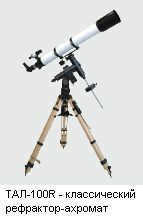

A refractor telescope is made up of individual lenses. They are easily identifiable by their long, narrow tubes that widen at one end where the objective lens is located.
These telescopes do not require much adjustment, aside from occasional sharpening.
While they have limited brightness, they are not the best choice for observing dim and hazy objects.
However, they are excellent for observing the Moon, planets, and binary stars. They can also serve as powerful telescopes for exploring the local neighborhood – a fun activity for guests ;-).
If you’re looking for a great option, you might consider the Celestron AstroMaster 90 AZ. This telescope has a 90mm aperture and a 100mm focal length, making it a solid choice for the price.
Another reputable manufacturer of refractor telescopes is the Novosibirsk refinery, known for producing high-quality apochromatic models. However, these models do come at a higher price point.
The reason for chromatism to occur is that visible light is composed of waves with varying wavelengths (or colors) that refract at different angles in the lens. As a result, the image’s focal point appears to be spread out along the optical axis. To put it simply, the red part of the image is formed in one location, while the blue part is formed in another.
The path of rays of various hues in a basic single-lens refractor is not the same. The focal points of the different hues do not align with each other.
Presently, refractors utilize achromatic lenses, where the gathering lens is made by fusing two types of glass. These glasses nearly cancel out the chromatic aberration caused by the varying refractive indices of the rays. Specifically, the focal points of two particular hues are brought as close together as possible.
As a result, the use of a simple lens as a refractor was previously limited to around 35mm in diameter. However, the introduction of achromatic pairs has enabled the diameter of lenses to be increased to 100-120mm. Of course, there are refractors with even larger diameters, but they are too expensive for amateur astronomers who are just starting out.
An achromatic refractor combines the focal points of two wavelengths:
Apochromatic refractors are a more expensive option compared to achromats, but they offer significantly less distortion. Instead of using just two lenses, apochromatic refractors utilize a greater number of lenses to achieve convergence of three or more colored rays. While it may be difficult to visualize the path of these rays, the example of achromats makes it clear. The addition of extra lenses slightly reduces luminosity, but it results in a higher-quality image and the ability to achieve much higher magnifications.
Refractors are particularly useful for observing the Moon and planets. However, when it comes to searching for galaxies and asteroids, larger apertures are necessary, and refractors make obtaining these apertures easier.
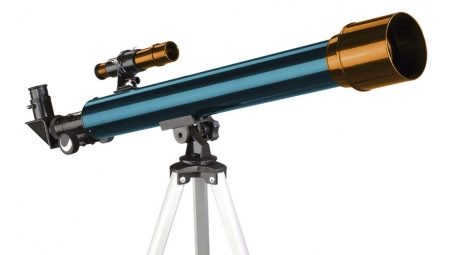
What are these?
To begin with, let’s dive into some theory. Telescopes have the purpose of maximizing magnification and providing a clear visualization of the observed object. These instruments can be categorized into two types: reflectors and refractors. The most basic type is the refractor. The way they work is based on the refraction of light when rays pass through lenses.
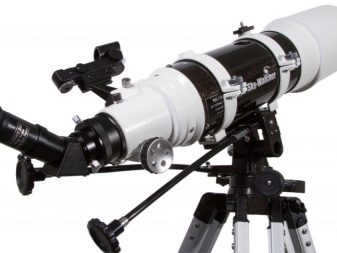
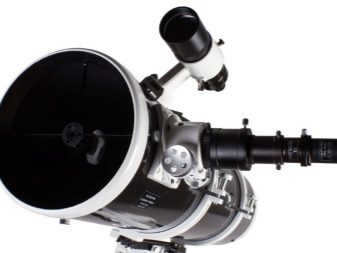
Basic models of telescopes consist of two lenses. One lens acts as the main lens, responsible for refracting and focusing the incoming rays into a single point. The other lens is an ordinary eyepiece, used to view the resulting image.
This means that the main lens of the telescope provides a highly magnified view of distant objects. The image is then directed to the eyepiece, which functions similar to a magnifying glass. In some models, the eyepiece is positioned perpendicular to the axis of the telescope tube, rather than along it. In these cases, the image from the main lens passes through a refractive lens before reaching the eyepiece.
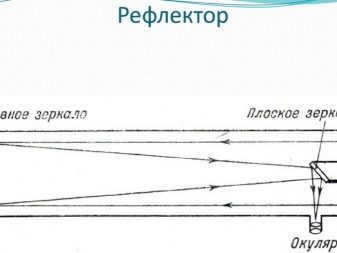
To distinguish between a refractor telescope and a reflector telescope, one must grasp their fundamental dissimilarities. The key element of a reflector telescope is a concave mirror. It consolidates all incoming rays into a unified beam, which is then redirected to the eyepiece through a system of supplementary mirrors and prisms. Some models also incorporate a perpendicular eyepiece that features a refracting lens.
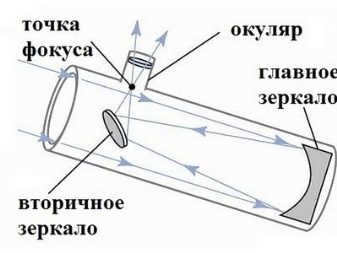
The refractor, which is often considered the simplest type of telescope, is easily identifiable by its elongated tube of small size. One end of the tube is slightly widened to accommodate the receiving lens.
These particular models do not require any additional adjustments. Users simply need to aim for sharpness when using them. However, the optics of refractors have limited luminosity, which can make it challenging to observe faintly luminous celestial bodies. For the best viewing experience, it is recommended to use a refractor telescope on a clear night to observe the Moon, paired stars, and planets.
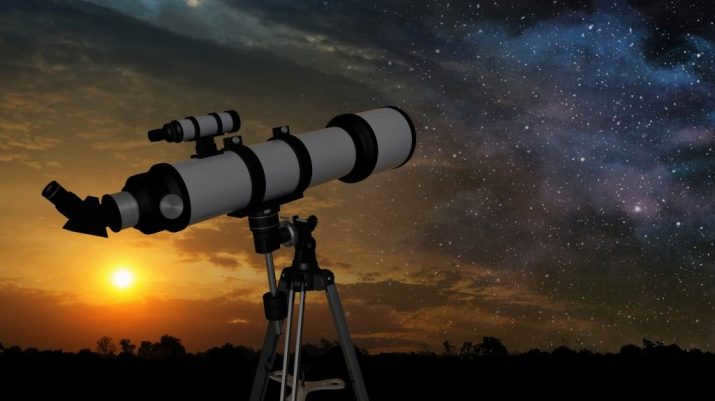
Refractors possess a range of advantages.
They have the ability to deliver the majority of collected light rays to the eyepiece, which sets them apart from reflectors.
When comparing refractors and reflectors with the same lens diameter, the image in refractors is clearer and brighter. This is due to their higher light permeability.
Unlike reflectors, refractors do not have a secondary mirror that takes up useful space in the lens. Additionally, the path of light rays in refractors is directed straight to the eyepiece without multiple reflections from mirrors, resulting in maintained clarity and contrast in the image.
All components are securely fixed, eliminating the need for lens adjustments. The housing is tightly sealed, providing effective protection against dust. Reflectors lack this advantage.
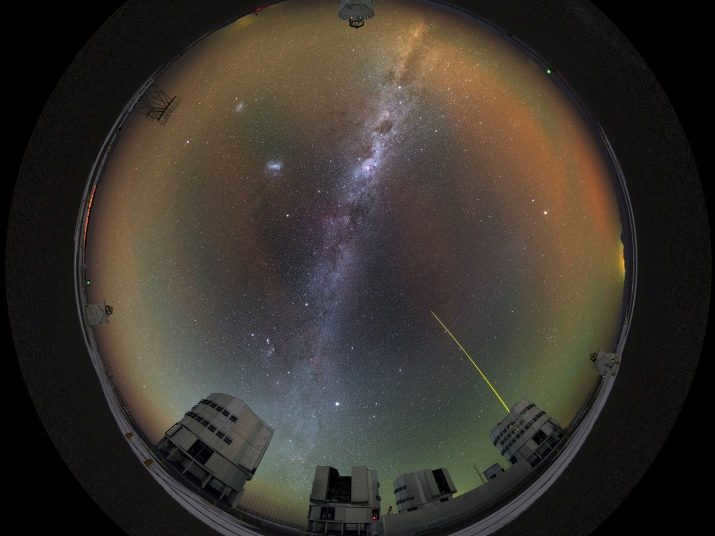

However, refractors also come with their own set of drawbacks.
First and foremost, there is the issue of chromatism – chromatic aberration, which refers to distortion. This effect is characterized by the presence of a colored halo around the observed object. The brighter the celestial object, the more pronounced the halo will be. Moreover, chromatism becomes more prominent as the lens diameter increases and the focal length decreases.
As a result, this phenomenon restricts the availability of high magnification on affordable refractor models. Early astronomers attempted to combat chromatic aberration by designing telescopes with focal lengths of several meters.
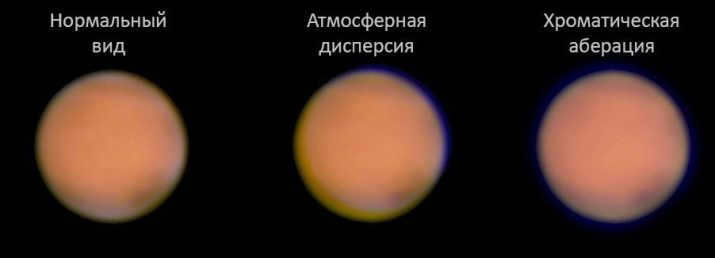
When selecting a telescope, it is important to consider that the quality of the picture improves with a longer tube.
Refractors have a limited aperture, so it is recommended to choose a model with a diameter of at least 120 mm. However, the price of optics sharply increases beyond this threshold. Additionally, smaller apertures result in dim views of deep space objects. As a result, refractors are best suited for observing bright objects like the Moon.
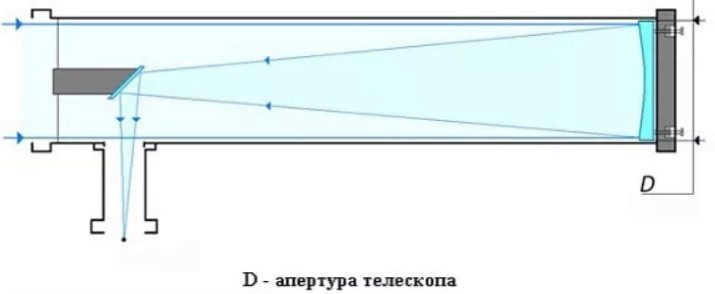
Origin story
In the year 1609, the renowned scholar Galileo crafted the initial rendition of a refracting telescope. After hearing about the Dutch’s invention of the telescope tube, Galileo managed to unravel its intricate design and used that knowledge to fabricate the very first prototype of a telescope. This groundbreaking invention enabled people to explore the wonders of the night sky. The device had a 4 cm aperture, a magnification of 3, and a focal length of approximately 50 cm.
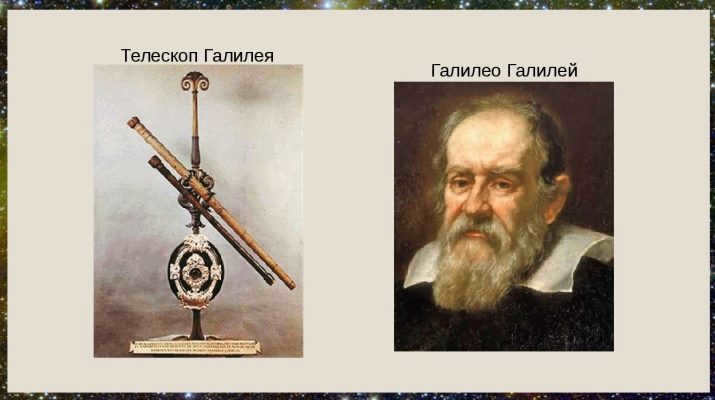

After some time, the design of the telescope was enhanced. The size of the second refractor’s opening was increased to 4.5, the length of the lens was 125 cm, and the level of magnification reached 34.
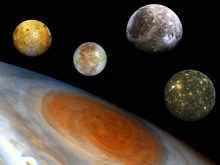
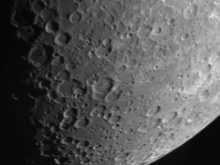
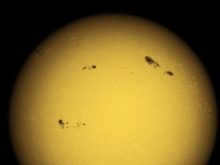
Types of telescopes
Refractor telescopes have undergone numerous improvements and modernizations over the course of four centuries. The latest models differ significantly from their initial counterparts. Let’s explore some of the most renowned variations.
Galileo
Galileo’s telescope was designed with the utilization of two lenses. The scattering lens served as an eyepiece, while the collecting lens functioned as an objective lens. This configuration allowed for the production of a non-inverted, direct image. However, it came with notable distortions. Nowadays, this particular model is not in high demand, although it can still be found in theater binoculars.
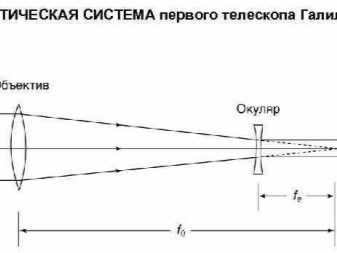
Kepler’s
In 1611, Johannes Kepler made a slight enhancement to Galileo’s innovation. In order to accomplish this, he replaced the scattering lens in the eyepiece with a collecting lens, which resulted in an expanded field of view but an inverted image. One of the advantages of Kepler’s refractor was the inclusion of an intermediate image, which allowed for the placement of a measurement scale within the device.
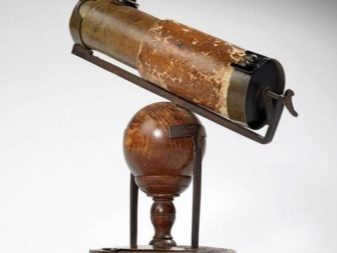
Essentially, all contemporary telescope models are constructed based on the Kepler tube design. One drawback of these telescopes is the presence of chromatic aberration, which has been a challenge to overcome for a long time. Attempts have been made to mitigate this issue by reducing the relative aperture of the tube.
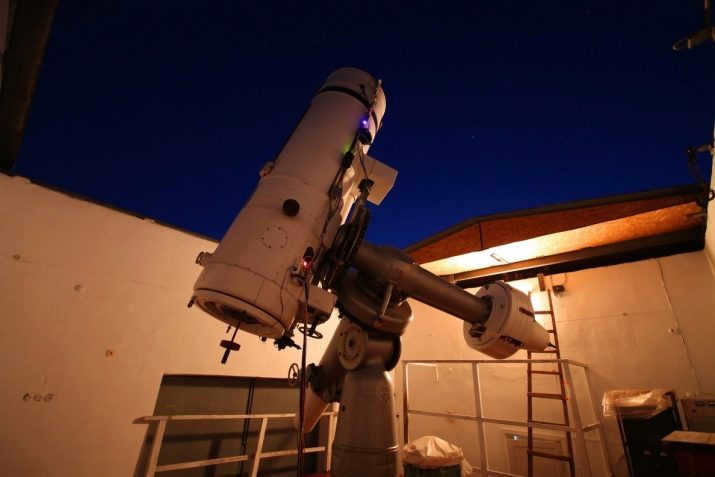
Achromat Refractor
In 1758, a breakthrough occurred with the creation of achromat refractors in England. These refractors were based on Galileo’s original design but featured a revolutionary achromatic optics system. This system incorporated a special pair of lenses with different refractive properties, effectively reducing chromatic aberration.
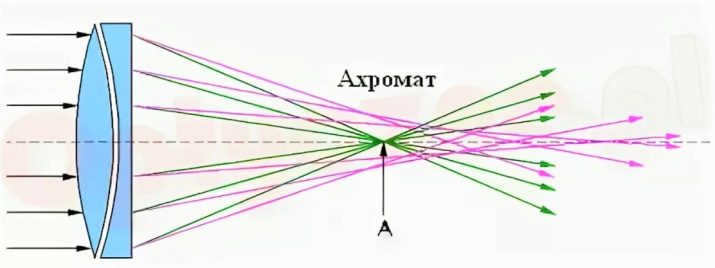
However, the issue was not completely resolved, and the shimmering border remained visible.
Apochromat
The latest telescopes available now are apochromatic telescopes. They are considerably more costly than achromats, which is why they were not commonly used until the 20th century. These telescopes provide a high-quality image, thanks to the utilization of specialized and expensive materials. Technological advancements have made it possible to minimize achromatism. Only those with a keen eye for observing the cosmos can detect a faint outline, and even then, only under unfavorable viewing conditions.
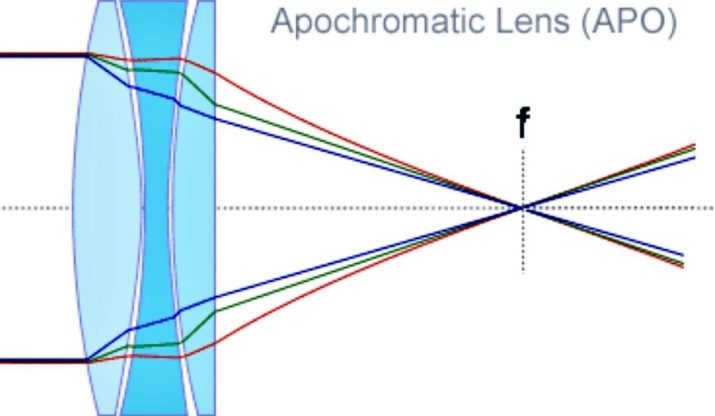

Top-rated models
Let’s take a closer look at the features of the most popular refractor telescope models.
Weber 360/50 AZ
This telescope is an ideal present for beginners in astronomy. It provides a non-inverted image and is mounted on an easy-to-use azimuth mount. The model is suitable for observing the planets of our solar system, examining lunar craters, and exploring terrestrial landscapes. It also allows for deep space observation, although the image may be less detailed.
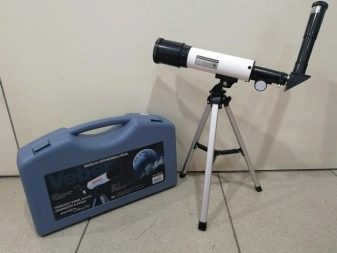
Offers an approximation range of 18 to 90x. Characterized by compact size and lightweight design. The device is portable and user-friendly, and comes with a durable case for convenient transportation and storage.
Introducing the Levenhuk Skyline BASE 50T
This telescope is perfect for children and beginner astronomers who want to explore the wonders of the night sky. It is easy to assemble and comes with all the necessary refractor control accessories, making it suitable for children to learn and use. With its powerful optics, you can observe planets, the Moon, and even terrestrial objects.
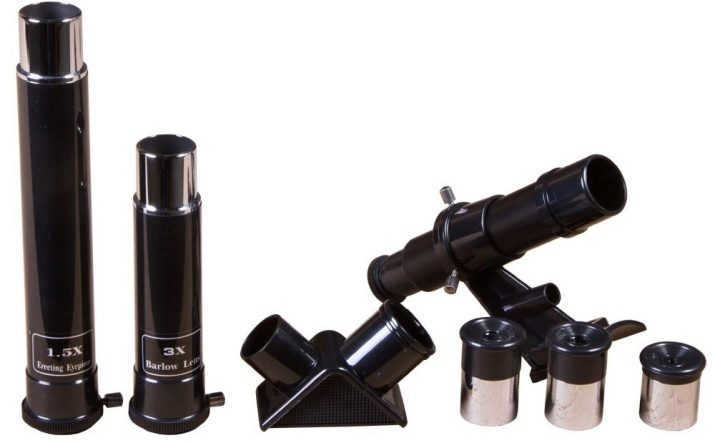
The azimuthal mount offers easy operation and enables you to quickly align the refractor with your desired object of study. The optical equipment is securely mounted on a sturdy metal tripod with legs that can be adjusted for height, allowing observers of all statures to customize the telescope to their liking. Moreover, the tripod comes equipped with an accessory box, providing convenient storage for a compass, star map, and any additional eyepieces or tools required for your observations.
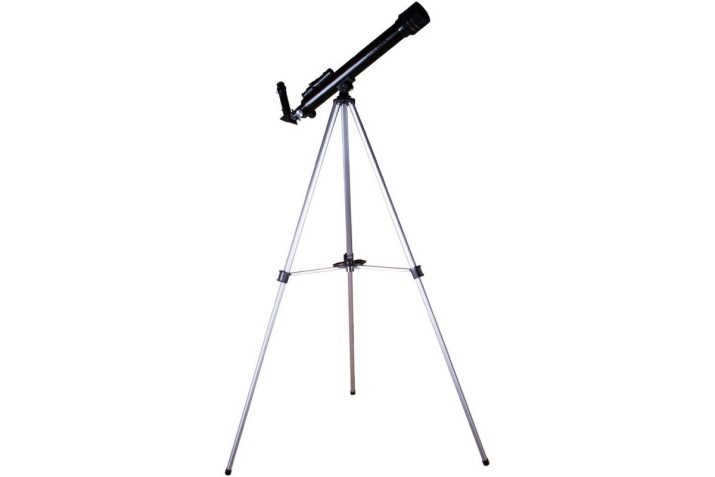
Konus Konuspace-4 50/600 AZ
An easy-to-operate telescope that serves as a conventional telescope. Provides a clear perspective of the Moon and objects on land. The model stands out for its extensive range of veneers and other accessories, eliminating the need for additional purchases.
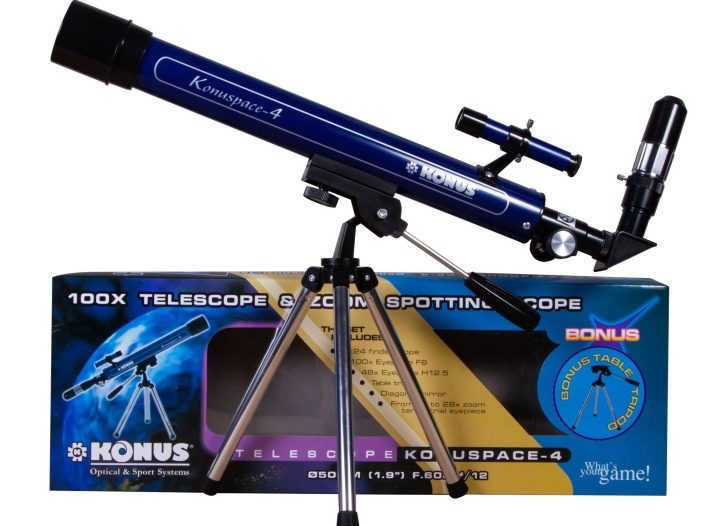

Using this type of telescope provides an opportunity for beginner astronomers to familiarize themselves with celestial navigation and gain a fundamental comprehension of optical instruments.
The PolarStar II 700/80AZ variant is highly sought after.
The World’s Largest Modern Instruments
The title for the largest refractor telescope in the world goes to the model constructed in Paris for the 1900 World Exhibition. Its objective lens had a diameter of 1.25 meters, and the length of the tube surpassed 60 meters. However, due to its immense weight and size, the telescope was mounted horizontally and fixed in place, which prevented any observations from being made. As a result, the telescope was disassembled after just 9 years.
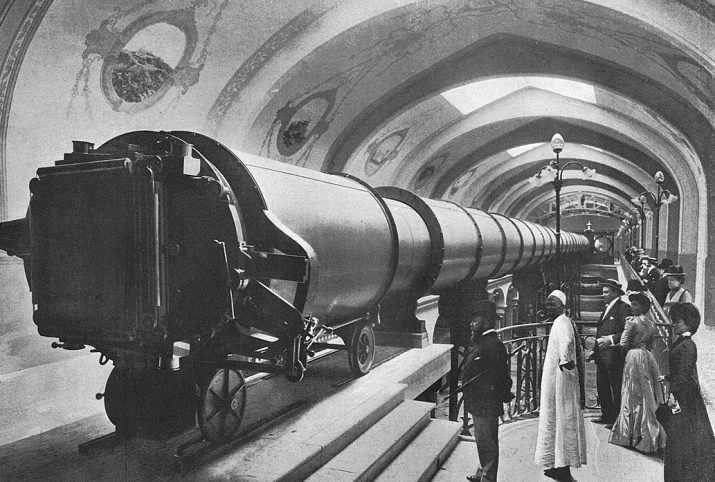
The Yerkes Observatory in Chicago houses the largest contemporary telescope, featuring a 1.1-meter objective lens. This advanced technology enables scientists to observe and study celestial objects within the Solar System that are extremely far away from Earth. The refractor telescope was specifically designed and manufactured in 1897, coinciding with the inauguration of the Yerkes Observatory.
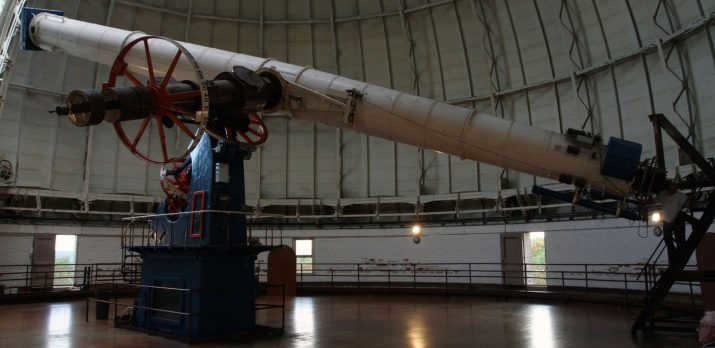
There are also large refractor telescopes situated at various locations worldwide, such as the Potsdam Astrophysical Institute, Lick, Pulkovo, Greenwich Observatories, as well as in Nice, Archenhold, and Allegheny. One particularly renowned example is the James Clark Maxwell Telescope, which is situated in Hawaii, USA, at an impressive altitude of 4200 meters.
A refractor is an optical telescope that utilizes a system of lenses, known as an objective lens, in order to gather light. These telescopes operate by exploiting the phenomenon of refraction.
Tools used at the People’s Observatory in Belgrade include the Zeiss-110/2000 refractor, which is prominently displayed in the foreground.
Origin of innovation
Device
A refractor telescope is made up of two primary components: an objective lens and an eyepiece. The objective lens creates a real, inverted image of a faraway object in the focal plane. This image is then magnified when viewed through the eyepiece, similar to looking through a magnifying glass. To minimize any aberrations caused by individual lenses (such as chromatic and spherical aberrations), compound achromatic and apochromatic lenses are commonly used. These lenses are made up of multiple convex and concave lenses that are combined and bonded together.
Galileo’s telescope
Galileo’s telescope was equipped with a solitary collecting lens as the objective lens, while a diffusing lens served as the eyepiece. This optical configuration resulted in a non-inverted (terrestrial) image. The primary drawbacks of the Galilean telescope include its limited field of view and pronounced chromatic aberration. Despite these limitations, this design is still utilized in theater binoculars, and occasionally in DIY amateur telescopes.
Kepler’s innovation in telescope design
In 1611, Johannes Kepler made a significant improvement to the telescope by replacing the scattering lens in the eyepiece with a collecting lens. This modification resulted in an increased field of view and pupil size. However, Kepler’s design had a drawback – it produced an inverted image. On the positive side, the Kepler tube had an intermediate image plane where a measuring scale could be placed. This feature made it a popular choice for subsequent refractor telescopes. Despite its advantages, the Kepler system had a notable disadvantage – strong chromatic aberration. This issue was only resolved with the development of the achromatic lens, which allowed for a reduction in the telescope’s relative aperture.
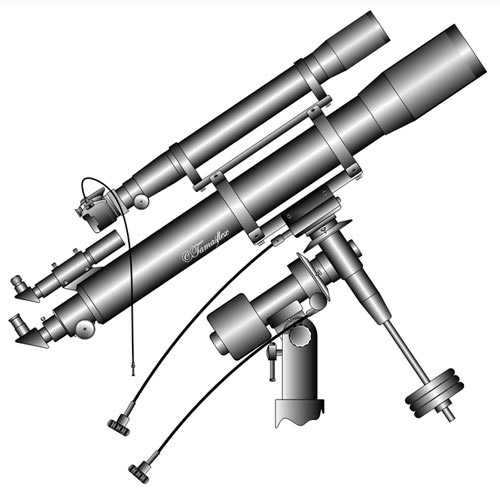

Achromatic Telescope
An achromatic telescope is a type of refractor telescope that uses an achromatic lens, typically a two-lens lens known as a doublet. This type of telescope has been widely used in the past and is still popular today. There are different types of achromatic lenses used in refractor telescopes, including the Littrow, Clark, and Fraunhofer doublets (with the Fraunhofer doublet being the most commonly used).
Apochromats
are lenses designed to minimize chromatic aberration, a common optical problem that causes colored fringes around objects. These lenses are specifically engineered to bring different wavelengths of light to a common focus point, resulting in sharper and more accurate images. Apochromats are widely used in various fields such as astronomy, microscopy, and photography, where precise and high-quality imaging is crucial. By reducing chromatic aberration, apochromats enable professionals to capture clear and detailed visuals, making them an essential tool for many scientific and artistic endeavors.
An apochromatic refractor telescope utilizes a specialized lens that corrects optical aberrations, particularly chromatic aberrations, to a much higher degree than an achromat. Typically, this lens incorporates ultra-low dispersion glass elements or fluorite. The lens itself consists of either two or three lenses. In comparison to achromats, apochromats can have a larger aperture and offer significantly superior image quality. The emergence of apochromatic refractors in the field of astronomical optics can be traced back to the latter half of the 20th century, although their widespread use was initially limited due to the high cost of fluorite optics or specialized glasses. However, since the 1990s, the introduction of ultra-low dispersion glasses with similar characteristics to fluorite has made apochromatic refractors much more affordable and popular, especially among amateur astronomers.
Contemporary refracting telescopes
The Yerkes Observatory (USA) houses the most sizable refracting telescope worldwide, boasting a lens diameter of 102 cm. Refractors of larger proportions are not commonly employed due to the exorbitant cost and excessively burdensome nature of creating high-quality, sizable lenses, which often results in image distortion and degradation. Consequently, larger telescopes typically utilize reflectors.
Our team of experts is ready to offer you expert advice on the top-rated refractor lenticular telescopes available on the market.
Additionally, we can provide you with the most up-to-date information on product availability, payment options, and delivery terms specifically for customers in Russia.
Fast and Reliable Delivery
Convenient Payment Options
100% Satisfaction Guarantee
Refractors – The Ultimate Lens Telescopes
When it comes to telescopes, there are two main types: refractors and reflectors, categorized based on the type of lens used.
A refractor telescope uses an optical lens as its objective lens, while a reflector telescope uses an optical mirror.
Both designs have their own advantages and disadvantages, but they have been successfully utilized for centuries.
Thanks to advancements in technology, the drawbacks of both types have been significantly minimized, allowing for a wide range of applications for each.
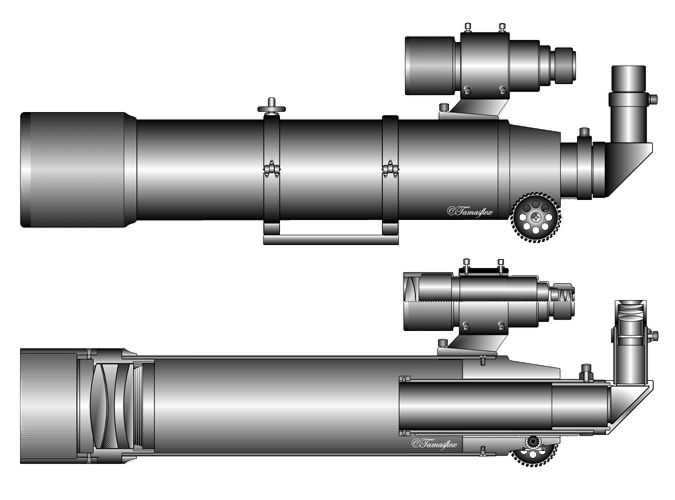

The primary configurations of refractor telescopes
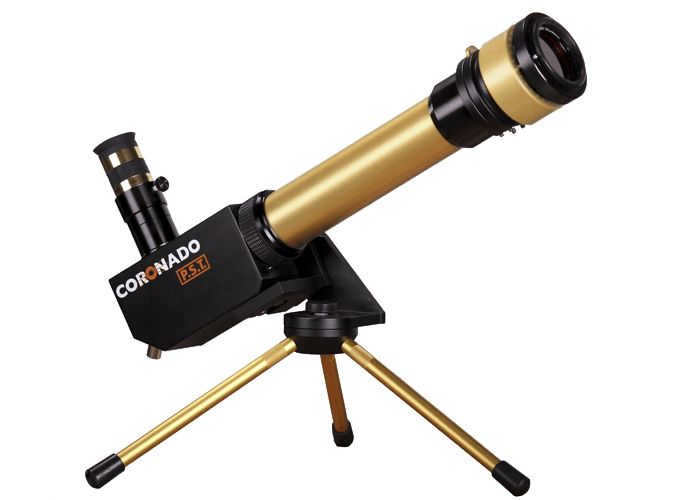
Galileo is believed to have proposed the first and simplest design of a telescope. This design utilized a collecting lens as the objective and a diffusing lens as the eyepiece, resulting in a non-inverted image of the object.
Drawbacks of Galileo’s design:
- Relatively low brightness;
- Significant optical aberrations (distortions);
- Lack of an intermediate image where a measuring grid could be placed.
This design is still utilized today, particularly in cases where obtaining a true uninverted view of the object is crucial.
Kepler developed another design that involved two collecting lenses.
There is a genuine image positioned between the eyepiece and objective lenses in this system, where it is possible to mount a measuring grid.
Furthermore, the length of the tube is determined by adding the focal lengths of the lenses, instead of subtracting them as in Galileo’s design, which naturally results in an increased tube length.
Drawbacks of Kepler’s construction:
Kepler’s design permits significantly larger field of view angles compared to Galileo’s design.
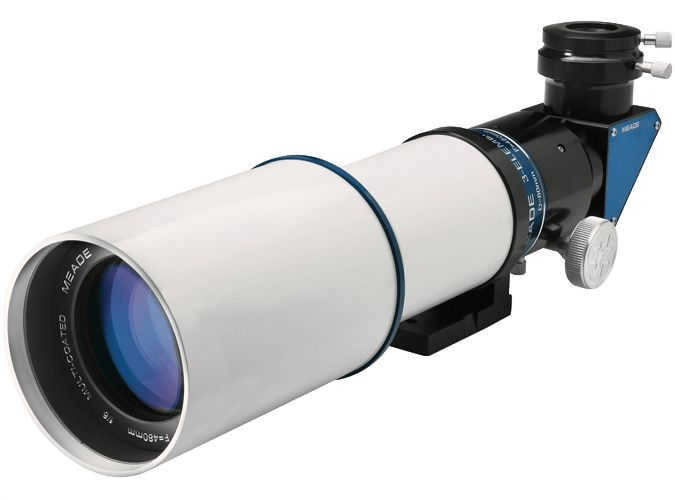
Receive expert guidance directly to your inbox
Our team is ready to provide recommendations on the top-notch refractor lenticular telescopes available in Russia.
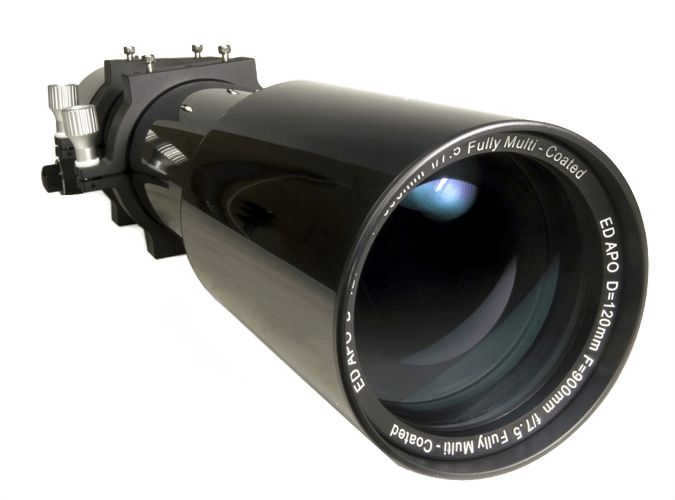

To restore the inverted image produced by Kepler tubes to its normal state, a prism turning system is used.
This method is employed when viewing the real image, but it does introduce some additional distortion and a decrease in light intensity.
Therefore, in the case of astronomical refractor telescopes, it is most common to utilize an inverted image.
In general, the Kepler system offers more advantages compared to Galileo’s design, which is why it has gained wider popularity not only in telescopes, but also in spotting scopes, high-magnification binoculars, and other optical instruments.
Telescopes’ Optical Configurations
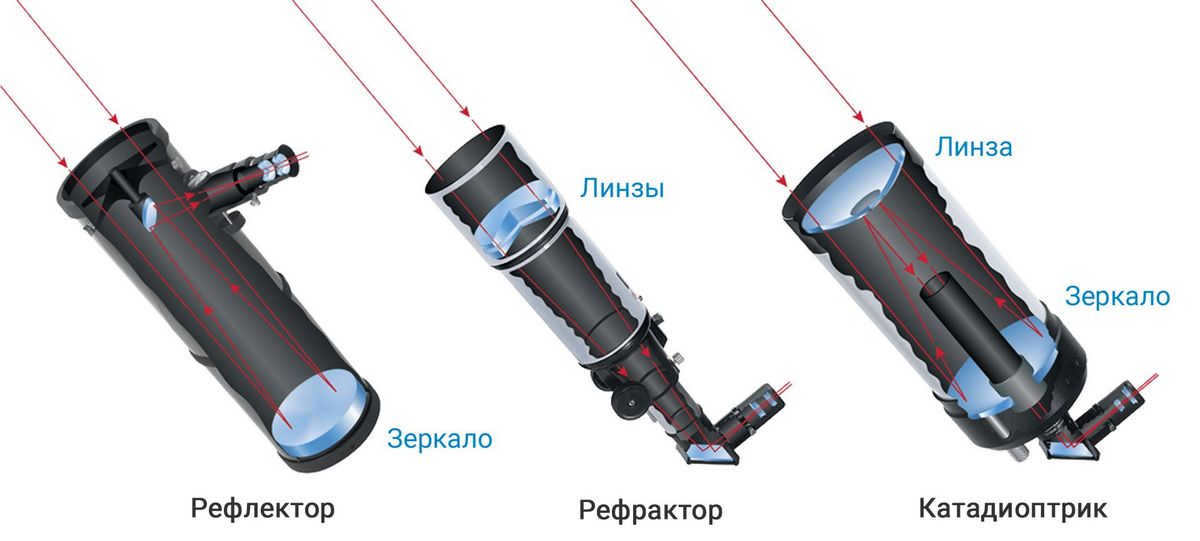
Refractors are also known as lenticular telescopes
Reflectors are commonly referred to as reflecting telescopes
Catadioptrics are mirror-lens telescopes
We will provide you with a list of refracting telescopes that you should avoid.
Drawbacks of Lensed Refracting Telescopes
When compared to their reflector counterparts, all optical designs have certain disadvantages stemming from the inherent properties of lenses:
- Chromatic aberration;
- Spherical aberration;
- Inability to adjust the optical parameters of the lens;
- Relatively long tube length.
Advancements in lens manufacturing techniques, the properties of optical glasses, and precise manufacturing of mechanical telescope components have allowed for the alleviation of many of these drawbacks. Spherical aberrations can be minimized through precise manufacturing of the lenses’ geometric parameters.
In order to minimize chromatic aberration, specialized achromatic lenses are employed. These lenses consist of connected elements made from materials with varying dispersion, enabling them to counteract the primary source of chromatic aberration – the differing angles at which light rays are refracted based on their wavelengths.
